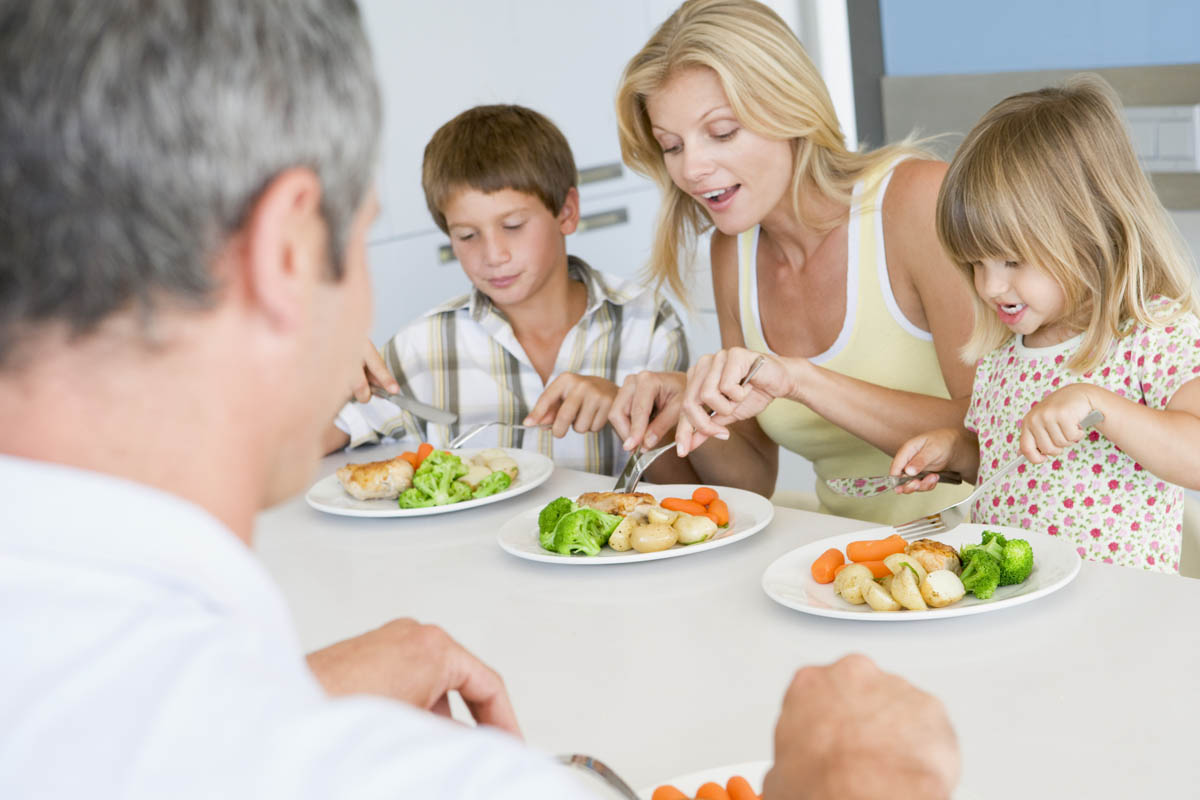Busy family lives can make it hard to sit down for a shared meal together. Different work schedules, after school activities and tired kids and parents can often mean a hasty dinner at the kitchen bench, or staggered mealtimes to match ballet or basketball practice.
But did you know that shared meals are linked to better nutrition and health?1 Primary school is an ideal time to introduce dinner routines and set healthy habits, and as an Accredited Practising Dietitian and parent of two, Teri Lichtenstein has got some tips to ensure it doesn’t end up as a battle.
Why eat together as a family?
Research shows that there are many positive nutrition associations between the frequency of family meals and healthier diets in children, including higher intake of fruits and vegetables, calcium, iron and various vitamins.1 There are also other surprising benefits for children including associations between family meals and enhanced vocabulary, academic success and instilling positive family values.2 There are several factors that may explain these nutrition benefits for children, including:3
- Watching parents eat the same meal and role modelling healthy habits
- Creating positive connections, communication and food relationships
- Turning off the TV, devices and other distractors to eat mindfully
- Taking a longer time to sit and eat at the shared table, thereby boosting intakes
Ready, set the table, go
The great news is that you don’t have to sit down to dinner together every single night to reap the benefits of a shared family meal. Try starting off with the weekends when things are not as rushed, or pick one less busy night during the week. Here are a few tips to get started:
- Meal plan: Get the whole family involved in dinner ideas and shop ahead or use online shopping to have all your ingredients ready to go. A family whiteboard that displays the menu really helps save time and keeps everyone informed, helping to share the mental load of mealtimes ;
- Smart swap: Go for recipes that can have easy substitutions for different ages and food preferences and serve communal style ;
- Freezer friends: Keep stand-by family favourites in the freezer;
- Routine rules: On family dinner nights make a consistent “sit down” time so everyone is organised, but keep things relaxed and avoid strict rules like “no dessert before finishing your peas”;
- Take time: Plan a fun discussion, do a show and tell, trial chopsticks, play some music or try other tricks to keep primary school aged kids seated for longer. A recent study showed just 10 minutes more at the dinner table may significantly boost fruit and vegetable intake.4
- Break the fast: Don’t forget that weekend brunch is also a perfect shared mealtime. If your mornings are a bit chaotic, prep brekkie ahead the night before with a dish like these Raspberry & coconut chia pudding breakfast bowls. Try taking it outdoors around a shared table and enjoy the sunshine
Kids in the kitchen
My kids have been helping in the kitchen since they were toddlers holding a spoon. It takes a little more time and effort, but you are investing in building food skills and knowledge for better health. And believe me, it is wonderful to have a teenager that can cook for you!
- Start simple: Before you trial cooking together, try simpler tasks like setting the table, folding napkins or taking the water jug out of the fridge. Just being together around cooking time is a learning activity and a way to build interest and knowledge in food and cooking
- Go no bake: Pick quick, safe, delicious and easy recipes to get started like this No bake choc-raspberry slice from 12 before 12 that is easy to make and has the fibre from Weet-Bix and dates, which can help support healthy digestion, as part of a balanced diet
- Connect with school: Keep an eye out for food and nutrition-based activities at your child’s primary school and build these into your menu and meals. Perhaps they have been harvesting carrots from the kitchen garden, so why not make these Carrot cake pancakes? If they've recently tried some new flavours at a multicultural cuisine day, try this Indian tofu curry
- Walk the talk: When cooking together, avoid labelling foods as good or bad and try not to associate food with body size or appearance. A good way to approach it is to think about a food’s taste and function, ask questions and share fun facts - what flavours make you happy?
Teri Lichtenstein, Accredited Practising Dietitian, has been installing healthy eating habits with her two kids since they took their first steps into the kitchen. She understands how hard it is to juggle family life with kids' activities and shares her tried and tested tips a, to help boost nutrition around the family meal table.
References
1 Dallacker, M. et al. (2018) The frequency of family meals and nutritional health in children: a meta‐analysis. Obesity reviews. [Online] 19 (5), 638–653.
2 Fruh, S. M. et al. (2011) The Surprising Benefits of the Family Meal. Journal for nurse practitioners. [Online] 7 (1), 18–22.
3 Middleton, G. et al. (2020) What can families gain from the family meal? A mixed-papers systematic review. Appetite. [Online] 153104725–104725.
4 Dallacker, M. et al. (2023) Effect of Longer Family Meals on Children’s Fruit and Vegetable Intake: A Randomized Clinical Trial. JAMA network open. [Online] 6 (4), e236331–e236331.
https://www.sanitarium.com/au/health-nutrition/kids/family-meals-matter





